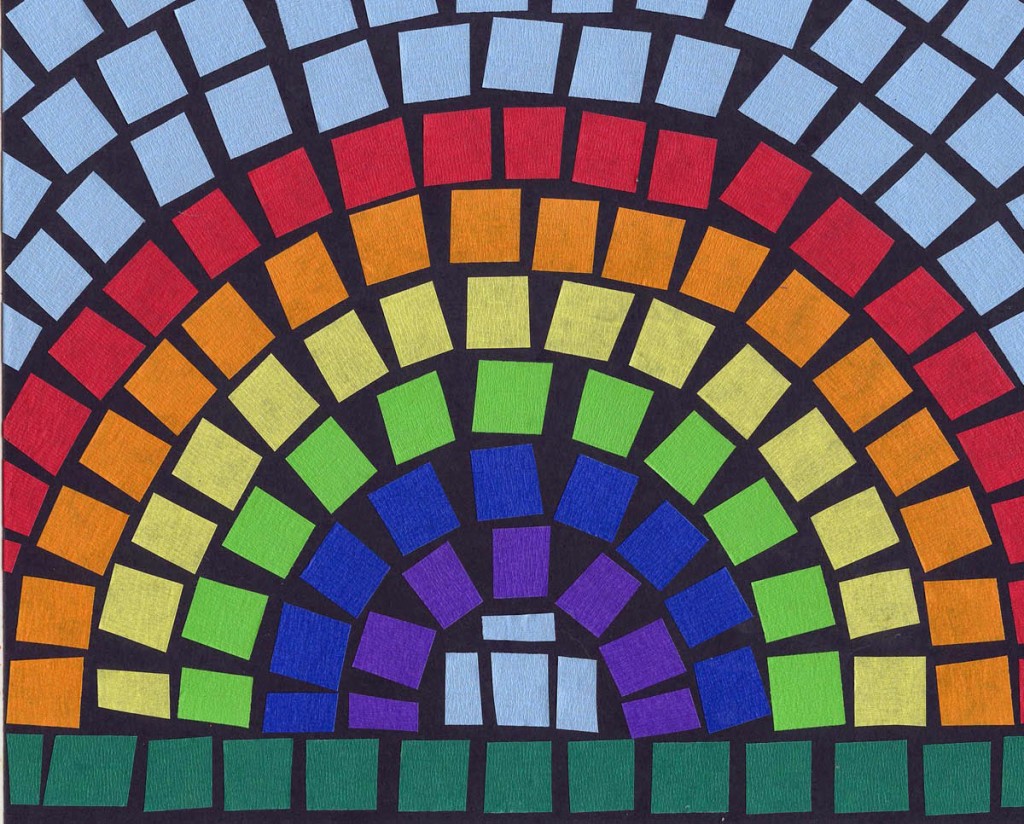
#Easy mosaic shapes install#
This method is useful because it allows you to make a mosaic indoors, so for example, you could make it during the winter and then install it when the weather warms up in the spring or summer. An example of this would be creating a mosaic on a tile and then mounting the tile with concrete onto a wall. The indirect method is when the mosaic is created on a base material offsite and then later installed onsite when it is convenient. An example of a direct method would be creating a mosaic on a brick wall located in a garden. The direct method is when the mosaic is constructed directly on the base material, which is the site of the project. There are two different methods that can be used in creating a mosaic.

Each pebble was precisely arranged to maintain the balance of Yin (feminine force of nature) and Yang (masculine force of nature) in the garden.

The Chinese made mosaic pathways that symbolized the natural world around them.

It since has become a world-renown public art installation that people flock to Spain to visit. He covered entire buildings from floor to ceiling with mosaic art. The world-famous Spanish artist Gaudi created mosaic installations in Barcelona, Spain using primarily recycled and found materials.They created pictorial mosaics that told a story, rather than being simply decorative. The Greeks created mosaics from pebbles that had been softened by the sea.The Romans popularized mosaics as an art medium – on indoor and outdoor walls, floors, ceilings, and in gardens.Mosaics have been created and used decoratively throughout the world and since ancient times.Youth and adults are all brought together in making a very original, important contribution to their community that because of its permanence is a continuous source of pride.The materials allow for creativity and the results of a mosaic project are almost instantaneous. Children and youth will be interested in this art medium, which is similar to the collage technique.Mosaics are a very versatile project - they can be an individual or collective enterprise, they can be simple or elaborate, or can be made from recycled and found materials.Working together as a group on a mosaic project improves teamwork and communication.Creating mosaics with young people can help to improve their self-esteem through empowerment, motivation, ownership, and inclusion.After only a few hours of steady work, an incredible mosaic image emerges, thus making it an immensely satisfying activity that appeals to youth and adults alike. The mosaic making process is both a leisurely activity as well as productive endeavor. The design of the mosaic can be simply decorative or it can depict natural elements such as the very plants and insects that are found in the garden. You can mosaic most anything in a garden – flowerpots and containers, paths and walkways, benches and tables, walls and fences, water fountains, and garden tools such as trowel handles and wheelbarrows. Making an outdoor mosaic is also a great way to personalize a garden space and give it a unique look and feel.

Natural materials such as shells, stalks, and leaves found in the garden also work well for certain mosaic projects as long as they have been protected for exterior use. Pictures or designs made up of pieces of smaller materials, mosaics can be made with pretty much anything – new, old, recycled, or found materials such as tiles, beads, buttons, glass, and mirrors. Mosaics are a great way to introduce more color into a garden, especially when plants stop flowering throughout the winter months. Adapt these activities to the age, interest, and skill levels of your group.


 0 kommentar(er)
0 kommentar(er)
